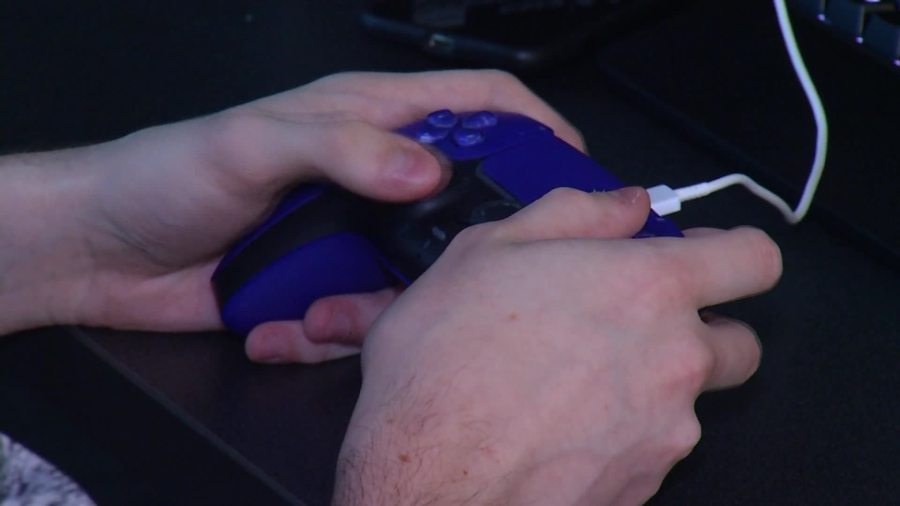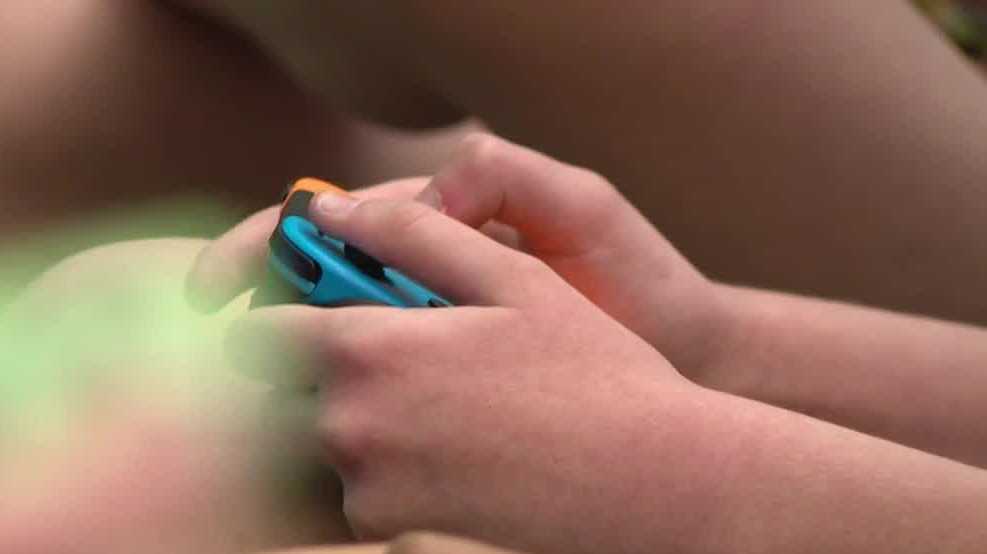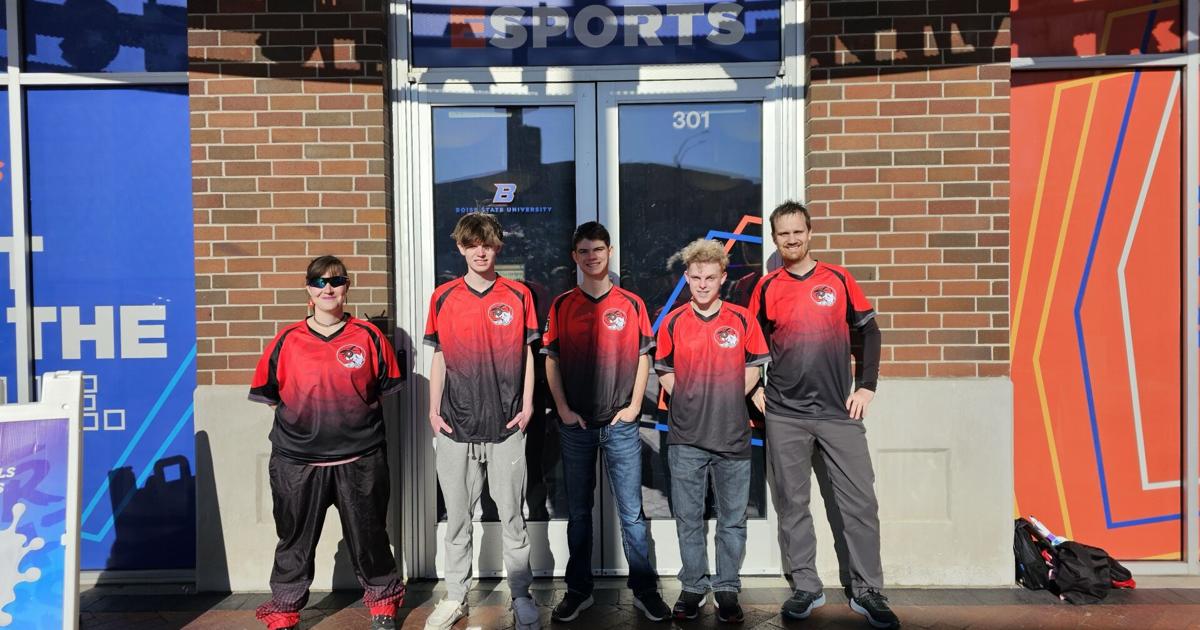E-Sports
Eye-tracking reveals distinct attention patterns in high-risk gamers compared to esports players
A recent study investigating how different types of dedicated gamers pay attention to gaming-related images found distinct patterns among those considered high-risk for gaming problems. High-risk gamers spent more time looking at gaming images, fixated on them longer initially, and shifted their gaze less often compared to competitive esports gamers and casual gamers, even though […]

A recent study investigating how different types of dedicated gamers pay attention to gaming-related images found distinct patterns among those considered high-risk for gaming problems. High-risk gamers spent more time looking at gaming images, fixated on them longer initially, and shifted their gaze less often compared to competitive esports gamers and casual gamers, even though esports gamers reported similar high levels of playtime. The research, published in the journal Computers in Human Behavior, suggests that eye-tracking technology might help identify gamers potentially vulnerable to problematic gaming behaviors.
The world of video gaming, including competitive electronic sports (esports), has exploded in popularity. This raises questions about the well-being of individuals who spend many hours gaming. While some studies suggest that esports gamers, who often train for 6-12 hours daily, might be at higher risk for gaming disorders due to their extensive playtime, others view their dedication through the lens of sports psychology, highlighting the intense practice and potential occupational stresses similar to traditional athletes. It remained unclear whether the challenges faced by esports gamers stem more from addictive-like processes or from the pressures of competition and training.
“This study was motivated by our observations of two seemingly similar yet psychologically distinct groups: esports gamers and high-risk gamers,” said study authors Shan-Mei Chang of National Tsing Hua University and Zheng-Hong Guan of National Yang Ming Chiao Tung University.
“While both groups spend comparable amounts of time gaming, esports gamers often view gaming as a structured career, whereas high-risk gamers typically play to escape real-life stressors. We were curious whether this difference in motivation would be reflected in their attentional responses and craving-related behaviors. Eye-tracking technology provided an ideal, objective method to explore this question.”
Previous research has established that individuals with substance addictions often show an attentional bias – meaning they automatically pay more attention to cues related to their addiction (like images of alcohol for someone with alcohol dependence). This bias has also been observed in behavioral addictions like gambling and internet gaming disorder. Scientists believe this heightened attention is linked to craving.
Since both esports gamers and individuals potentially developing problematic gaming habits (high-risk gamers) dedicate significant time to gaming, the researchers wanted to explore if their patterns of attention towards gaming cues differed. They hypothesized that high-risk gamers might show attentional bias driven by craving, possibly linked to using games as an escape, while esports gamers, viewing gaming as a career or structured practice, might not exhibit the same bias despite their long hours. Using eye-tracking technology provides an objective way to measure these subtle attention patterns, which might not be captured accurately by self-report questionnaires alone.
To investigate these differences, the researchers recruited 47 male participants between the ages of 15 and 19, all experienced in playing Multiplayer Online Battle Arena (MOBA) games like League of Legends or Arena of Valor. These participants were carefully categorized into three distinct groups.
Seventeen were designated as esports gamers, identified from a high school esports program where they had received over a year of formal training and competed in tournaments. Fourteen were classified as casual gamers, who played for fun and did not show signs of problematic gaming based on a screening questionnaire. The remaining sixteen were categorized as high-risk gamers, selected because their scores on the Internet Gaming Disorder Test met the threshold indicating potential problematic gaming patterns.
Each participant underwent an eye-tracking experiment. They sat comfortably with their head stabilized by a chin rest, looking at a computer monitor. An advanced eye-tracking device (EyeLink 1000) precisely recorded their eye movements. Participants were shown pairs of images side-by-side for two seconds at a time. In the key trials (56 stimulus conditions), one image was related to MOBA games (stimulus image), and the other was a neutral image matched for visual properties like brightness and size.
To prevent participants from guessing the study’s purpose, there were also 56 control trials where two neutral images were paired together. Researchers measured three main aspects of their eye movements: total viewing time (the total duration participants spent looking at each specific image area), first fixation duration (how long their very first gaze lingered on an image area after looking at it), and saccade count (the number of rapid eye movements, or jumps, between the two image areas on the screen).
In addition to the eye-tracking task, all participants completed several questionnaires assessing their weekly and weekend gaming time, impulsivity levels, symptoms of problematic internet use, depression symptoms, and their ability to control their attention (specifically focusing and shifting attention).
The analysis of the eye-tracking data revealed significant differences between the groups. When looking at the pairs containing a game-related image and a neutral image, the high-risk gamer group spent more total viewing time looking at the game-related images compared to the neutral images. Neither the esports gamer group nor the casual gamer group showed this difference; their viewing time was similar for both types of images. Furthermore, high-risk gamers spent more total viewing time on the game-related images than both esports gamers and casual gamers did.
Regarding first fixation duration, the high-risk gamer group generally had longer first fixations on the images (combining both game-related and neutral) compared to both the esports gamers and casual gamers. This suggests their initial gaze tended to linger longer before moving on. In terms of eye movements between images, the high-risk gamer group exhibited fewer saccade counts compared to the other two groups. This pattern indicates they shifted their attention back and forth between the paired images less frequently, potentially suggesting difficulty disengaging from an image once they looked at it or a slower pace of visual exploration.
“We expected that esports gamers, given their extensive gaming involvement, might also show attentional biases,” Chang and Guan told PsyPost. “However, their eye-movement patterns were more similar to those of casual gamers, suggesting their high gaming time is not driven by compulsive cravings.”
The self-report questionnaires added another layer to the findings. While esports gamers and high-risk gamers reported spending similar amounts of time gaming per week and on weekends (both significantly more than casual gamers), their psychological profiles differed. High-risk gamers reported significantly higher levels of impulsivity and more symptoms of problematic internet use compared to both esports gamers and casual gamers.
“A major takeaway is that gaming duration alone is not a reliable indicator of addiction risk,” the researchers explained. “Although esports gamers and high-risk gamers report similar gaming hours, only high-risk gamers showed significant attentional bias and impulsivity traits. This suggests that eye-tracking measures may reveal early risk factors missed by self-report tools, such as total viewing time. Our findings caution against diagnosing gaming disorder based solely on time spent gaming.”
The researchers noted some limitations to their study. The high-risk group was identified using a questionnaire score, not a formal clinical diagnosis by a psychiatrist. The study focused exclusively on MOBA games, so the findings might not apply to players of other game genres. The sample size, while statistically adequate according to their calculations, was relatively small and only included males. Future research could address these points by using clinically diagnosed participants, including gamers who play different types of games, and recruiting larger and more diverse samples.
“We aim to develop a diagnostic framework that integrates eye-tracking with psychometric assessments for early identification of high-risk gaming behaviors,” Chang and Guan added. “Such tools could also support interventions such as cognitive-behavioral therapy or mindfulness-based training. Identical behaviors (e.g., long gaming sessions) may stem from different psychological drivers. By shifting focus from ‘ow much they play’ to ‘why they play,’ we can more effectively understand and support at-risk youth in digital environments.”
The study, “Craving and attentional bias in gaming: Comparing esports, casual, and high-risk gamers using eye-tracking,” was authored by Shan-Mei Chang, Dai-Yi Wang, and Zheng-Hong Guan.
E-Sports
Summer camps aim to help grow esports culture in Kent County
GRAND RAPIDS, Mich. (WOOD) — A local esports company is holding camps in Grand Rapids this summer to help support the rapid growth of the sport. Jump Ahead Play Fuel summer camp will be held every Friday and Saturday from June 20 to Aug. 1 at Burton Middle School. The camp is free to all […]


GRAND RAPIDS, Mich. (WOOD) — A local esports company is holding camps in Grand Rapids this summer to help support the rapid growth of the sport.
Jump Ahead Play Fuel summer camp will be held every Friday and Saturday from June 20 to Aug. 1 at Burton Middle School. The camp is free to all kids 10 and up in Kent County.
Advertisement
“I’m very excited for the culture of esports that we’re building,” said Dee Jones, the chief energy officer at Jump Ahead L3C, the company hosting the camp.
He said that kids will get educated on digital finances; ‘shoutcasting’ commentary; cryptocurrency; name, image and likeness rights and more.
“I truly want them to know that people care,” Jones said of what he hopes kids get out of the camp. “People care about their education, people care about their goals, their dreams, the things that they look to achieve to get out of poverty, to change their lives, to break those barriers. To show their parents that you can actually get paid from gaming, have a career and potentially earn six or seven figures.”
Universities around the country are putting more resources into building esports programs, leading to the formation of competitive teams, new facilities and even scholarships.
Advertisement
Josiah Dunning played on Ottawa Hills High School’s esports team. It earned him a scholarship to Davenport University.
“It was an athletic scholarship, which confused me when I saw it the first time,” Dunning said.
Dunning is a part of a growing number of students who are using their talent for video games to help play for college. In Michigan alone, several schools now offer partial esports scholarships, including Michigan State, Central Michigan and Eastern Michigan.
“We’re actually increasing opportunities and kids around our community are directly benefiting from this,” Jones said.
Copyright 2025 Nexstar Media, Inc. All rights reserved. This material may not be published, broadcast, rewritten, or redistributed.
For the latest news, weather, sports, and streaming video, head to WOODTV.com.
E-Sports
Lander’s Lindqvist Named WGCA Second-Team All-American
Story Links CORAL SPRINGS, FLA — Lander’s Kajsa Lindqvist was named a second-team All-American by the Women’s Golf Coaches Association (WGCA) on Friday. Flagler’s Stella Jelinek and Henriette Stranda had previously been named first-team All-Americans, giving the PBC three in total. Flagler’s Jordyn Jodgson and North Georgia’s Jadin Ware were […]

CORAL SPRINGS, FLA — Lander’s Kajsa Lindqvist was named a second-team All-American by the Women’s Golf Coaches Association (WGCA) on Friday. Flagler’s Stella Jelinek and Henriette Stranda had previously been named first-team All-Americans, giving the PBC three in total.
Flagler’s Jordyn Jodgson and North Georgia’s Jadin Ware were also named honorable mention All-Americans.
A junior from Göthenburg, Sweden, Lindqvist played every round for Lander in 2024-25, with one victory and nine top-10 finishes, tied for most in the PBC. She shot par or better in 13 of her 36 rounds for a 73.03 stroke average, third in the league. Ranked #13 in the nation by Scoreboard, she shot seven-under 65 twice during the season, the two lowest rounds (relative to par) by any PBC player.
Lindqvist finished in fourth place at the NCAA South Regional with rounds of 73-69-74, earning one of the two individual spots in the NCAA National Championships. At the nationals she finished in a tie for fourth after shooting one of those 65s, jumping 11 spots on the leaderboard in the final round.
A three-time PBC first-team All-Conference selection, Lindqvist earns her first All-America honor.
E-Sports
Omaha school hosts video game summer camp
School’s out for summer, and for some kids, that means heading off to camp.An e-sports summer camp was held at Omaha’s Quest Forward High School this week. English teacher and eSports coach, Angee Henry, originally took the coaching gig to help ensure students had something to do after school.”They said, ‘There’s no coaches in the […]

School’s out for summer, and for some kids, that means heading off to camp.An e-sports summer camp was held at Omaha’s Quest Forward High School this week. English teacher and eSports coach, Angee Henry, originally took the coaching gig to help ensure students had something to do after school.”They said, ‘There’s no coaches in the building, will you coach?’ And I’m like, ‘Well, I coach track,’ and they said, ‘Oh, then you can coach e-sports,” Henry said.She immediately saw how passionate the students involved were, and how competitive a skill it can be.Her first year on the job, her team finished third overall in a Super Smash Bros. Class D competition.”I think looking at it as a sport, because we look at it as a game sometimes. You know, football is a game, but it has respect in there and just respecting it, and knowing that athletes are participating in something serious,” Henry said.Maximus Johnson is one of 14 students who participated in this week’s camp. He said his favorite part was learning from other players and being part of a team. “Here it feels like you’re actually playing together for the same reason, and you have the same values on why you’re playing,” Johnson said.Johnson loves video games for the creativity they offer, but he picked up more than just victory royales during camp.”I’m learning teamwork and skills that have to do with strategy, that’s been really fun and useful. I think it’d be cool to play e-sports for a living, but even then, I’m still learning very good values here,” Johnson said.Johnson said as much as he loves gaming, he recognizes the need to still be physically active and get outside. He added that this camp included interactive factors like warmups and a real-life outdoor version of Mario Kart.Coach Henry shared her message to all: E-sports can level up students’ lives.”It can take them to college, it can take them into IT jobs,” Henry said. NAVIGATE: Home | Weather | Local News | National | Sports | Newscasts on demand |
School’s out for summer, and for some kids, that means heading off to camp.
An e-sports summer camp was held at Omaha’s Quest Forward High School this week.
English teacher and eSports coach, Angee Henry, originally took the coaching gig to help ensure students had something to do after school.
“They said, ‘There’s no coaches in the building, will you coach?’ And I’m like, ‘Well, I coach track,’ and they said, ‘Oh, then you can coach e-sports,” Henry said.
She immediately saw how passionate the students involved were, and how competitive a skill it can be.
Her first year on the job, her team finished third overall in a Super Smash Bros. Class D competition.
“I think looking at it as a sport, because we look at it as a game sometimes. You know, football is a game, but it has respect in there and just respecting it, and knowing that athletes are participating in something serious,” Henry said.
Maximus Johnson is one of 14 students who participated in this week’s camp.
He said his favorite part was learning from other players and being part of a team.
“Here it feels like you’re actually playing together for the same reason, and you have the same values on why you’re playing,” Johnson said.
Johnson loves video games for the creativity they offer, but he picked up more than just victory royales during camp.
“I’m learning teamwork and skills that have to do with strategy, that’s been really fun and useful. I think it’d be cool to play e-sports for a living, but even then, I’m still learning very good values here,” Johnson said.
Johnson said as much as he loves gaming, he recognizes the need to still be physically active and get outside. He added that this camp included interactive factors like warmups and a real-life outdoor version of Mario Kart.
Coach Henry shared her message to all: E-sports can level up students’ lives.
“It can take them to college, it can take them into IT jobs,” Henry said.
NAVIGATE: Home | Weather | Local News | National | Sports | Newscasts on demand |
E-Sports
Highland esports team wins second place at state championship | Game
State AlabamaAlaskaArizonaArkansasCaliforniaColoradoConnecticutDelawareFloridaGeorgiaHawaiiIdahoIllinoisIndianaIowaKansasKentuckyLouisianaMaineMarylandMassachusettsMichiganMinnesotaMississippiMissouriMontanaNebraskaNevadaNew HampshireNew JerseyNew MexicoNew YorkNorth CarolinaNorth DakotaOhioOklahomaOregonPennsylvaniaRhode IslandSouth CarolinaSouth DakotaTennesseeTexasUtahVermontVirginiaWashingtonWashington D.C.West VirginiaWisconsinWyomingPuerto RicoUS Virgin IslandsArmed Forces AmericasArmed Forces PacificArmed Forces EuropeNorthern Mariana IslandsMarshall IslandsAmerican SamoaFederated States of MicronesiaGuamPalauAlberta, CanadaBritish Columbia, CanadaManitoba, CanadaNew Brunswick, CanadaNewfoundland, CanadaNova Scotia, CanadaNorthwest Territories, CanadaNunavut, CanadaOntario, CanadaPrince Edward Island, CanadaQuebec, CanadaSaskatchewan, CanadaYukon Territory, Canada Zip Code Country United States of […]
E-Sports
Minecraft laces up with Adidas in pixel-perfect digital drop
Free companions, wearable kicks, and a player-powered map put the spotlight on Minecraft’s newest crossover Minecraft x Adidas drops free fashion-fueled update Jump into the gaming fashion frontier Minecrafters can now express and build their in-game character thanks to a major collab with Adidas that combines blocky creativity with streetwear fashion. Launched April 1, 2025, […]

Free companions, wearable kicks, and a player-powered map put the spotlight on Minecraft’s newest crossover
Minecraft x Adidas drops free fashion-fueled update
Jump into the gaming fashion frontier
Minecrafters can now express and build their in-game character thanks to a major collab with Adidas that combines blocky creativity with streetwear fashion. Launched April 1, 2025, the “Minecraft x Adidas” crossover is not a skin pack or merchandise collection; it’s a digital expansion for Minecraft: Bedrock Edition that includes companions, functional gear, and narrative-based gameplay.
At first glance it doesn’t feel like branded product placement; it feels like a natural extension of the player-first philosophy that’s at the heart of Minecraft. Players aren’t just wearing Adidas they’re creating with Adidas.
/pcq/media/media_files/2025/06/06/mSmbkBgsxjiRj8CQwQWO.jpg)
Free DLC is part style, part functionality
The partnership kicks off with the Adidas Adventurer Add-On, free downloadable content from the Minecraft Marketplace. This isn’t just a reskin of jerseys and leggings. This drop comes with new gameplay systems, functional companions, and movement-based gameplay for player-driven exploration.
Here’s what’s in:
-
Three in-game Adidas-themed companions:
-
The Coach: Finds ore, boosts mobility, and tracks quests.
-
The Mascot: Gathers food and resources while managing player hunger.
-
The Teammate: Provides combat support, buff effects, and lava protection.
-
-
Digital sneakers and armor inspired by real-world Adidas shoes.
-
• Loot boxes with collectible gear:
-
A playable map called “Play at the Speed of You,” with parkour zones, puzzles, and exploration quests.
These aren’t just cosmetic. Companions actually affect gameplay, offering everything from pathfinding to inventory management. It’s a low-key but effective way to marry fashion with function.
Beyond branding: A nod to Gen Z values
This collaboration does more than just get Adidas into Minecraft. It acknowledges how gamers think about identity, mobility, and customization today.
For Adidas, this is part of its Originals initiative a campaign aimed directly at Gen Z players who value digital self-expression. For Mojang, it’s an experiment in player-led storytelling. And for the Minecraft community, it’s another example of how the game continues to evolve with you.
The real-world apparel drop reflects that, with Adidas tracksuits, T-shirts, and sneakers featuring Creeper eyes, Enderman prints, and pixel-themed colorways.
/pcq/media/media_files/2025/06/06/2pdDo78r6AAU3flNYTDl.jpg)
Real style makes real steps
Notice the difference? Unlike other brand partnerships that had visuals only, this DLC directly affects how the game feels. Each companion has its own AI behaviors and abilities in-game. Each quest system has been reworked to account for the new objects. The map itself has been designed for replayability with challenges that are shaped by the player’s speed.
This is not another collaboration; it’s a playable sneaker campaign.
Now even the loot boxes are tied to movement. When a player moves, they get loot the faster they run, the higher the loot box gain. Complete the parkour zones to earn gold tier loot boxes. The way a player moves in the game is dictated by the physical game system, not the branded environment.
What this means for gaming x fashion collaborations
Brand collaborations like Minecraft x Adidas are becoming a regular thing, but very few are actually a true experience between brand visibility and overall gameplay value. With them adding this DLC for free, it shows that Mojang has left you, the player, be and not turned you into a customer. Instead of dollars earned, it might mean endorsements as a result of community creativity and self-expression.
For Adidas, the only repayment they cared about was relevance. For Minecraft, it’s just another feather in the cap. For the players it’s simple: just download the game, get some gear, and start running!
More For You
Minecraft Chase the Skies update soars with Happy Ghast and epic visuals
Summer surprise block party Minecraft 1.21.6 set to rewrite the rules in June 2025
Craft and conquer Minecraft’s May update finally lets you build your own saddle
How to survive your first night in Minecraft without getting wrecked
Top Minecraft minigames to play with friends online
E-Sports
Hacksaw Gaming Going Public | iGaming IPO & Growth
Hacksaw Gaming — a Malta-based game developer — is planning to go public on the Nasdaq Stockholm exchange, a move that signals robust confidence following a period of sustained expansion. The company, known for its innovative slot and instant win games, is looking to capitalize on its significant market penetration and increasing financial success. Strategic […]


Hacksaw Gaming — a Malta-based game developer — is planning to go public on the Nasdaq Stockholm exchange, a move that signals robust confidence following a period of sustained expansion. The company, known for its innovative slot and instant win games, is looking to capitalize on its significant market penetration and increasing financial success.
Strategic Move Reflects Strong Market Position
This anticipated initial public offering (IPO) comes as Hacksaw Gaming continues to solidify its footprint in the highly competitive iGaming sector.
Hacksaw Gaming has carved out a stylistic niche, focusing on distinctive art, innovative features (like “Dare2Win” scratchcards and unique slot mechanics), and high-volatility gameplay that appeals to a specific segment of players. This has allowed them to grow in a highly competitive market that features developers such as NoLimit City, Push Gaming, and Relax Gaming.
“Hacksaw’s Board of Directors and management consider the IPO on Nasdaq Stockholm to be a logical and important step in Hacksaw’s development.” — Hacksaw official statement
Hacksaw Gaming’s consistent performance and growing portfolio of popular titles like “Wanted Dead or a Wild” and “Stack ‘Em” likely played a role in this decision. The platform was also well-poisitioned to expand The company’s commitment to delivering high-quality, mobile-first content has resonated with operators and players alike, securing key partnerships and expanding its global reach.
This strong market position provides a solid foundation for a public offering, enabling Hacksaw Gaming to leverage increased financial flexibility to accelerate product development, enhance its technological infrastructure, and pursue new strategic partnerships that will further cement its standing as an industry leader.
Implications for Sweepstakes Casino Platforms
Hacksaw Gaming’s public offering could also have significant implications for the burgeoning sweepstakes casino market. Hacksaw titles are already featured on several prominent sweepstakes platforms, including Stake.us, McLuck, High 5, and RealPrize.
With the increased capital and visibility from an IPO, Hacksaw Gaming could further invest in developing content specifically tailored for this fast-growing sector. This might involve creating more games optimized for the sweepstakes model, or even exploring exclusive partnerships that could give sweepstakes casinos a competitive edge.
Enhanced financial stability could also allow Hacksaw to dedicate more resources to compliance and legal navigation within this complex and evolving market, potentially leading to more secure and diverse game offerings for sweepstakes players.
Future Prospects and Industry Impact
Hacksaw Gaming’s journey to the public market is expected to generate considerable interest within the gambling industry. A successful IPO could provide the company with substantial resources to accelerate its development pipeline, explore new sweepstake casino markets, and potentially pursue strategic acquisitions.
This move could also set a precedent for other privately held iGaming providers experiencing similar growth trajectories, highlighting the increasing maturity and investment potential of the online gambling landscape.
Beyond immediate financial gains, a public listing will elevate Hacksaw Gaming’s brand profile, making it an even more attractive partner for operators and a magnet for top industry talent. The capital raised could be instrumental in funding ambitious new projects, including the integration of emerging technologies like VR/AR into their game offerings or venturing into new gaming verticals.
Ultimately, Hacksaw Gaming’s foray into the public market signifies a significant milestone for the company and underscores the dynamic evolution of the global iGaming sector.
-

 College Sports3 weeks ago
College Sports3 weeks agoPortal Update – Basketball and Gymnastics Take Hits
-

 College Sports3 weeks ago
College Sports3 weeks agoPortal Update – Basketball and Gymnastics Take Hits
-

 Professional Sports2 weeks ago
Professional Sports2 weeks agoJon Jones answers UFC retirement speculation as fans accuse champion of 'holding the belt …
-

 Health3 weeks ago
Health3 weeks agoBYU women's basketball guard injures ACL twice
-

 NIL2 weeks ago
NIL2 weeks ago2025 NCAA Softball Tournament Bracket: Women’s College World Series bracket, schedule set
-

 Youtube2 weeks ago
Youtube2 weeks agoXavier Legette taught Marty Smith his signature celly
-

 High School Sports2 weeks ago
High School Sports2 weeks agoToday in the MHSAA
-

 College Sports3 weeks ago
College Sports3 weeks agoIU basketball recruiting
-

 College Sports3 weeks ago
College Sports3 weeks agoNCDC Commitment Profiles: Cyclones’ Martins Moving On to Saint Anselm College • USPHL
-

 Motorsports2 weeks ago
Motorsports2 weeks agoWhy IHOP Rode With Dale Earnhardt Jr. In Amazon NASCAR Debut




































